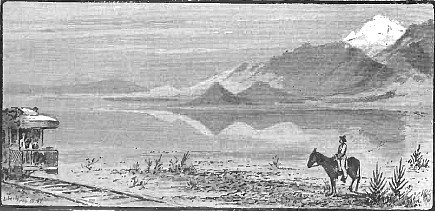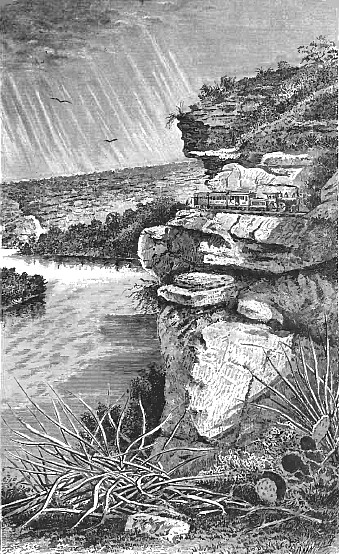Under the title "Mineralogical Sketch of the Silver Mines of Arizona," Mr. Raphael Pumpelly, in 1861, presented a paper to the California Academy of Science, which was published in the proceedings (Vol. II, 1862). A copy was also printed by Mowry in his "Arizona and Sonora," in 1864. That paper deals chiefly with the minerals and mines of the Cerro Colorado, and of the Santa Ritas as then known. The principal species noted are the argentiferous grey copper, stromeyerite, galena, sphalerite and native silver, practically the mineral species of the Salero and Tyndall District as known today.
In May, 1907, the writer contributed a list of Pima County minerals to the "Citizen" for its "Mining and Industrial number," which list, with additions and corrections, is here repeated. Reference is also made to the list of Mineral localities of Arizona, published in 1909, as a report to the Governor. The most abundant and showy mineral species of which Pima County can boast, are doubtless the ores of copper, more especially those resulting from the oxidation of copper sulfides. The mineral cabinets and great museum collections of the world have been enriched by the brilliant crystallizations of azurite, malachite and cuprite from the stopes of the Copper Queen mine at Bisbee, in the adjoining Cochise County. Fortunately for such collections, and for science, the management of the mine under Dr. James Douglas has ever been an appreciative conserver and distributor of the gems of the mine. A fine series may be seen in the Museum of the University. Other remarkably beautiful cystallizations of the rare mineral known as Wulfenite, the molybdate of lead, have been taken from the Mammoth mine north of Oracle, and from the Old Yuma, specimens of which are also in the Museum.
Amongst other compartively rare species occurring at several places in Pima County, we may mention molybdenite, vanadinite, Descloizite and tungstic ochre. The following alphabetical list includes some of the best-known species and localities, but is confessedly imperfect: Argentite. Silver sulfide. With the silver ores of the Eureka, the Alta, Montezuma, Empress of India, Montezuma's Daughter and other silver mines of the Tyndall District, Santa Cruz County. Also, in the ores of Cerro Colorado and Liberty mine.
Argentiferous Grey Copper. See
Tetrahedrite.
Argentiferous Lead Ore. See
galena.
Azurite.
The blue carbonate of copper. At the Azurite mine; Sierrita; Helvetia, at the Imperial, Silver Bell District, Ajo, and at nearly all the
copper mines of Arizona.
Barite.
In complex groups of flattened crystals from the Quijotoa District. At the
Imperial Copper Mine, Silver Bell District, in crystals; also at the Santa
Catalinas.
Calcite. A common associate of
the ores of lead, of copper and of silver. Abundant as caliche.
Cerussite . Lead Carbonate. Is
generally found in the oxidized croppings of the lead-bearing lodes. . At
the Paymaster, the Mowry, in Santa Cruz County ; at the Flux Mine, Patagonia; World's Fair Mine.
Chalcocite. At Spencer's Papago
Copper Mine, Cababi, District, and at other copper claims.
Cuprite.
Crystallizations of this rich ore of copper were formerly abundant in the
ores of copper at the Copper Queen in Cochise County. A cubic crystal
measuring nearly one half inch on the sides, and translucent of a fine
ruby-red color adorned the collection of Mrs. Williams of Bisbee. It was
formerly found in large masses with
native copper and malachite at
the Ajo.
Chalcopyrite.
The most common of the combination of form and copper with sulfur,
chalcopyrite is known
generally as "yellow copper." It is common in most of the Arizona copper
claims. It is softer than iron pyrites with which it is very generally
associated. Found at the Helvetia Mines; Paymaster Group; in Tucson
mountains and the Silver Bell Mines, at Leatherwood. Apache Camp.
Chrysocolla. Silicate of
copper in varying shades of green color is a common associate of other ores
of copper in the croppings of the copper-bearing lodes of Pima County.
Descloizite. A compound of zinc
and vanadic acid. Occurs at the Old Yuma Mine, near Tucson. This species
named for the late Professor Des Cloiseaux, a famous mineralogist of Paris,
France.
Epidote. An alteration mineral
allied to garnet and a frequent associate of ores of copper and specular
iron. It is abundant at the Morgan Mine, Twin Buttes, and in the shales of
Silver Bell District it carries native copper.
Garnet. Common as a veinstone of
copper ore at the Twin Buttes, Imperial and other mines;
garnet is found at Helvetia and in the Mineral Hill District.
Gypsum. At many localities in
Pima and Santa Cruz Counties, especially along the San Pedro River.
Native Gold. At Greaterville,
in placer deposits, also in veins in the basal
granite
conglomerate of the Santa Ritas, and in shaly
limestone. In the placers of Horseshoe Basin, and generally in
association with copper ores in small quantity. In
quartz veins at Oro Blanco,
Arivaca and Salero in Tyndall District.
Electrum "White-Gold" is found
at the Oro Blanco District and at Canada de Oro. At the Southern Belle, Old
Hat District, Catalina mountains.
Galena
or Galenite. A widely distributed mineral,
generally silver-bearing and known as argentiferous lead. Old Yuma mine,
near Tucson ; Liberty mine, C-erro Colorado.
Also in Tyndall District ; Eureka, Mabel and other mines; Paymaster mines,
Sierritas; at the Mowry mines, Santa Cruz County; World's Fair
mine. Flux mine, Patagonia; at the Vekol (Pinal) and other mines west and south of
Tucson.
Huebnerite.
A tungstate of manganese, used specially for making tungsten steel and for
hardening steel. This
tungsten ore occurs abundantly in
quartz lodes in and near the Arivaca District. Also in the
Whetstone mountains and the Dragoons, in Cochise County.
Hematite. Occurs massive and foliated
at several copper mines and especially in the Montosa copper mines and in
the foliated form associated with copper and with
sphalerite at the Pluto and at the Isabella and other claims.
Lead Sulfide. See Galena. For lead-carbonate see Cerussite.
Manganite A common
manganese ore frequently
associated with lead and silver ores, especially in the lodes traversing
diorite in the Tyndall District, Santa Cruz County. It is there
earthy and amorphous mingled with other oxides and is derived from pink
manganese spar; one of the veinstones. At the Coyote mountains, manganese
oxide forms a thick superficial coating on porphyritic rocks.
Magnetite. Common as croppings of
copper deposits, especially in Santa Cruz County, Tyndall District, near to
the Montosa, and in Josephine Canyon at the Vulcan, in a large bed
associated with copper ore and suitable for flux. At the Twin Buttes and
other copper mines in Pima County.
Molybdic Ochre. At McCleary's
molybdenite mines, Santa Ritas.
Molybdenite. Molybdenum
sulfide, at McCleary's mines, Santa Ritas, in quartz gangue.
Native Silver. World's Fair
mine, near Patagonia, Santa Cruz County;
Eureka mine and the Alta, Salero,
Tyndall District.
Native copper Paymaster
mines; in epidote, Silver Bell District. At the Ajo.
Scheelite. (Tungstate of
lime.) Occurs in the Maudina claim, Old Hat District, Santa Catalinas.
Specular Iron.
This species, known also as
hematite and micaceous
iron ore is a frequent associate of copper ore croppings, often in
the position of gossan overlying the copper ore. Occurs in large beds
associated with magnetite in Tyndall District, Santa Cruz County. See
Hematite.
Sphalerite.
Sulfide of zinc. This important
zinc ore occurs at the Montana mine, Santa Cruz County, at the
Helvetia and other mines in Pima
County.
Stibnite.
Sulfide of antimony, occurs sparingly in connection with some of the
lead ores.
Stromeyerite. An ore of copper of
high grade and rich in silver. Constitution mine, Tyndall District, Santa
Cruz County ; also at the Montezuma group, same district ; Heintzelman mine,
Cerro Colorado.
Tenorite. Black oxide of copper,
is usually found in small quantities in the midst of rich secondary copper
ores in the croppings of the larger copper lodes.
Tetrahedrite. In the veins
traversing: diorite in the Tyndall District, Salero. In the World's Fair
mine, near Patagonia. At the mines of the Cerro Colordo; also in the Cababi District. In
cyrstals at mine of Clark & Petersen.
Tungsten. :See Huebnerite.
Vanadinite. A
vanadium ore found at the Old Yuma mine, north of Tucson.
Return
to The Arizona Page:
Arizona Gold Rush Mining History



